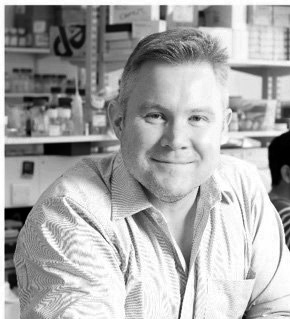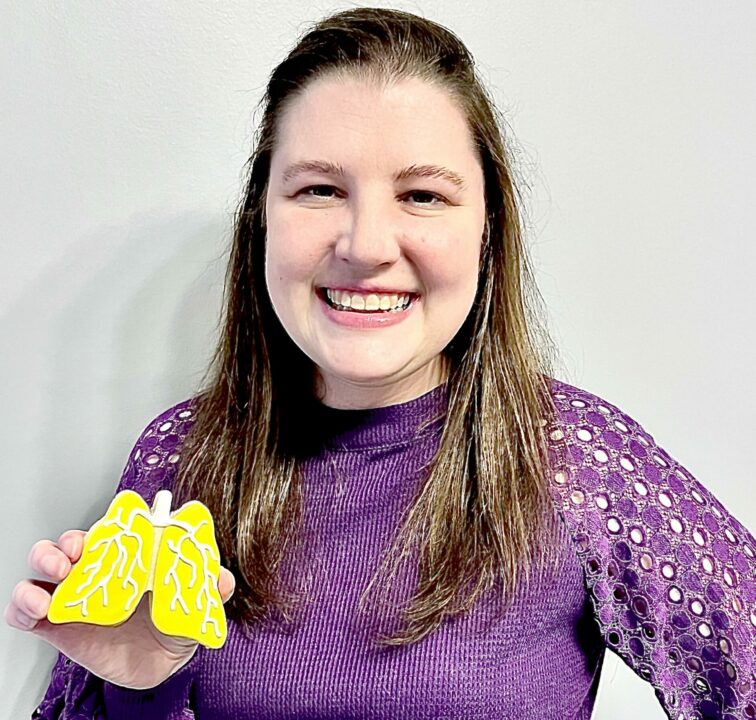Authored by Cello Health, now part of Lumanity
| Chronic inflammation is the most significant cause of death worldwide, with more than 50% of all deaths caused by inflammatory-related disorders. The risk of developing chronic inflammation can be traced back to early childhood and its effects are known to persist throughout life and affect adulthood. As we go through life our immune system is challenged by a variety of aggressors and environmental stimuli – these can impact the way our body responds to a pro-inflammatory stimulus. To develop anti-inflammatory therapeutics that treat the disease as well as eradicate symptoms, it’s important that we understand how the entire inflammatory response resolves and switches off in different environments but also what pathways go into disarray, and whether we can fix those pathways and reverse the disease process or the problem. With this in mind, we caught up with Professor Derek Gilroy at University College London to discuss the outlook for the treatment of inflammatory-related diseases. |
What led to the focus of your current research?
I completed my PhD in 1997 at the William Harvey Research Institute, which in those days focused largely on cardiovascular and inflammation biology. At that time and under the supervision of Professor Derek Willoughby and Professor Sir John Vane, we were using animal models to understand inflammatory responses when I became interested in how inflammation switches off. To put this in context, we know a great deal about what drives the inflammatory response – heat, redness, swelling and pain – that happens when one gets an infection or a bee sting; indeed, many of these pathways are targets for nonsteroidal anti-inflammatory drugs and biologics, for instance. However, we knew very little of what switches it off.
We also recognised that these drugs don’t cure the underlying disease process, they only treat the symptoms. So, there was an opportunity to understand more about how the entire inflammatory response switches off or resolves.
My research evolved from rodents to developing human models for experimental research in healthy people and people with chronic inflammatory diseases and since then, I’ve been focusing on human translation experimental medicine, specific to inflammatory resolution.
Tell us about the importance of human translational medicine in this field?
While rodents have contributed greatly to biological research, the immune system of rodents is, of course, not the same as that of humans. Also, the type of disease models that we use in rodents do not fully represent the human condition. For example, collagen is used to drive an arthritis-type disease in the joints of rodents with the argument that this experimental disease reflects what occurs in humans. There are, however, many exceptions to that argument. Understanding how inflammation starts and how inflammation switches off in healthy young people informs on internal immune pathways specific to humans, that may not necessarily be the case in rodents.
Taking this further, while it’s very difficult to challenge the internal organs of humans with inflammatory stimuli – some groups do use pulmonary endotoxin models; we use skin as a window into the human immune system. We developed a range of acute inflammation models that range from non-specific tissue injury, where we apply chemicals to skin that cause tissue injury, to killed bacteria and purified bacterial products, namely endotoxin. We also introduce T cell antigens to individuals who have been vaccinated to these antigens earlier in life. A good example is tuberculin protein in volunteers who have been previously vaccinated with the BCG vaccine. The rationale is that unlike bacteria or tissue injury models which drive innate neutrophils response, these specific models use the tuberculin protein or the varicella zoster virus to drive a lymphocytic inflammation. Collectively, we’ve developed a full gambit of acute non-specific innate, right up to T/B cell driven response in skin in both healthy young people, as well as older people and those with chronic diseases.
What is the current focus of your human research and what insights are you uncovering?
In human disease, we focus on which pathways go into disarray and investigate whether we can fix those pathways thereby reversing the disease. In essence, we aim to reset the immune defect. Clearly, we can’t inject noxious stimuli into humans that cause chronic disease to understand how immunity goes into disarray. However, we can experiment on individuals with innate or acquired immune defects. A good example of this is aging – experimentation on older humans is a meaningful way of understanding the impact of age or, if you like, immune senescence on human immunology.
I’m not saying that old age is a disease, but our immune system changes as we get older, bringing tremendous challenges to the health and wellbeing of the individual and consequently, the health services and to the economy at large. By 2100 the number of persons aged 60 or above will be triple that of 2017, rising to 3.1 billion. In the US, 14 million people are affected by non-healing wounds with 85% of these individuals aged 65 or over costing US$25 billion/year. In addition, young people who receive the flu vaccine will be about 90% protected, but in people over the age of 75 this can drop down to as low as 30%. Therefore, there is a pressing need to understand diseases of old age and the role of the immune system.
Hence, by using older people, we are using natural models of immune alteration that precipitate diseases as we age and when we challenge skin of young people with antigens or chemicals, we can also look at cohorts of old people and compare immune response – does it start very aggressively, does it cause tissue injury, does the transition to resolution and dampening of the immune response occur in a timely manner, does it cause scarring, and do we mount an appropriate adaptive immune response? It’s a natural way of harnessing a disease type setting in humans.
The other opportunity to come from our research approach is insight into multi-morbidities, which is the accelerated development of a disease secondary to the primary or index disease. For example, patients with lupus or rheumatoid arthritis have a two-to-three-fold increase rate of development of cardiovascular disease, particularly atherosclerotic disease development. There’s something about the immune system of patients with a chronic autoimmune disease that somehow precipitates at a faster and more severe rate.
To expand on this, we have ongoing studies where we’re eliciting skin challenge on rheumatoid arthritis patients with the hypothesis that failed resolution pathways contributes to the diseases chronicity. As the study progressed it became apparent that it was going to be difficult to uncouple any innate (e.g. genetic) or acquired age-related resolution pathways in these patients, from the negative impact the chronic ongoing disease would have on the immune system of the patient. In other words, separating cause from consequence.
So, we have turned the experimental question around by asking, if you challenge a distal organ, that is the skin of arthritis patients with an inflammatory stimulus, can we gain insight into the aetiology of multi-morbidities.
In essence, our aim is to define the disease we’re looking at, define what we’re asking and be open to the outcome. Human experimental medicine lends itself very well indeed to this approach. It also means that we can use the skin of a patient cohort of interest and challenge it with a stimulus and elicit experimental inflammation thereby informing how their systemic immune compartment reacts to inflammatory challenges.
Why is it not possible to simply remove and measure blood cells and achieve the same things?
You can, and that’s been done historically. We and others discovered that the blood cells of an old person, for instance, will respond differently to the blood of a young person and the blood of a rheumatoid patient likewise. However, once cells leave the peripheral blood circulation and get into tissues that are experiencing an immune challenge, their inflammatory behavior changes manifesting in differential release of immune hormones and responses to drugs. This is because the extravascular tissue environment re-shapes the personalities of these cells. And this better reflects the primary index disease than simply taking blood. Certainly, it’s not the same as taking cells straight out of a joint, lung or liver and harnessing that environment, but it is much closer than using human blood. That’s the overall strategy and rationale for our human approach.
How do you see the work you do on human models eventually translating into the clinic and what are the associated challenges?
Whilst it’s our hope, it’s very hard to predict whether research will translate to improved clinical treatment or even the development of a new drug. The least we should aim for however, is to add to the current body of scientific knowledge. If you partner with industry to help develop a drug, all the better. Or if your research highlights inadequacy within the clinical setting that needs to be improved upon that’s also a great achievement. However, the one thing that is certainly within our grasp is to train and mentor the next generation of scientists.
When scientists are researching the root cause of a disease, the problem is that that disease is not homogeneous. If you look at the genetics of Crohn’s disease and Colitis, for instance, there are several endotypes – it’s not the same for everyone. The pathology might look similar, but the underlying driving processes can be very different. Therefore, if you don’t identify the right pathway that is driving that disease pathology then developing a drug may not work.
A good example is p38 map kinase – a proinflammatory pathway identified in many
experimental diseases systems and targeted for example, in the treatment of COPD and arthritis. If one isolates human blood and stimulates it with LPS, a pro-inflammatory stimulant, the p38 pathway become activated within white blood cells, empowering them with the necessary armamentarium to kill bacteria and drive a sepsis-type response. Despite this, the inhibition of p38 in diseases like COPD and RA has been surprisingly disappointing. This tells you that while we have developed great tools to target putative pro-inflammatory pathways, the underlying biochemical pathways driving that pathology were wrong. Perhaps we need to define or redefine “pro-inflammation” pathways in a disease setting.
So, that’s the challenge for me – to identify pathways in human experimental models that when inhibited in the disease will ameliorate the underlying pathology, or symptoms at the very least. For that reason, it’s incredibly important to become focused. With Crohn’s disease or COPD as the example, it wouldn’t be unreasonable to think that even within those groups of individuals, there are different processes driving different phases of the disease in different patient cohorts. Its therefore imperative to find the underlying pathogenic pathways that are operative in the affected people, rather than assuming it from preclinical studies or ex-vivo assays.
It therefore follows, that those personalized drugs may not be effective against other diseases – I can’t imagine that the resolution pathways of a TB lung are the same as the resolution pathways of colitis.
So, medicines need be personalized for the specific pathways that drive a particular disease. That’s why we need to become more defined about the disease pathologies, the sub-disease and the differential pathways that elicit them.
How would you like to see human experimental research evolve and improve?
Outside of the UK, colleagues are always surprised at how we can conduct research on humans, which is clearly a distinct advantage for us. However, universities are large and unwieldy with researchers like me working in isolation often unaware of relevant research being carried out elsewhere in the organization. The vision for human experimental research here at UCL is to have a coordinated procedures facility that’s clinically equipped and where we have healthy people, old people, people with diseases all linked up to the hospital and to the specialists. I also think that imaging is an important tool that needs to be better harnessed in this field, so we can more accurately assess what’s taking place in the immune system of people.
Indeed, we have worked successfully over the years with several companies to understand how their drugs work, whilst at the same time using these drugs as tools to manipulate immune pathways. This, along with quantifiable indices or outcomes, helps us understand more about human immunity.
What is great about the UK, is that getting ethical approval for these studies is comparatively straightforward. The idea is to work closely with the MHRA and justify that the drug of interest is firstly safe in humans, and secondly targets a pathway expressed during a biological process such as during the resolution of acute inflammation and then thirdly, that the aim of the study is to gain new knowledge of human immunity rather than about the drug itself, so the clinical trial.
To summarize, we need to be better organized, have greater focused research aims and more teams with basic and clinical research scientists working together. We must not underestimate the complexity of the disease we’re investigating and ask the most appropriate and informed questions about that disease being mindful of the confounding factors of age, multi-morbidities, trained immunity and of course genetic determinants. We also need to appreciate that females mount different immune responses to males.
Do you see stronger industry collaboration happening in the future?
Absolutely. I see a greater need than ever for stronger collaborations between academia and industry; the development Oxford/AstraZeneca COVID-19 vaccine is a classic example of this success. Academia and industry together will accelerate the discover of new biology with our industrial colleagues complementing this with the ability to make drugs. Partnering effectively with industry can also provide an additional level of focus, particularly on where you take the research in the future and where it is likely to find a commercial path.

| Derek Gilroy is Professor of Experimental Immunology, and Head of the Department of Experimental & Translational Medicine, which forms one of nine departments within the Division of Medicine at UCL. He is also Scientific Director of the Division of Medicine, with the latter consisting of approximately 450 staff comprising both clinical and basic research scientists. His research interests focus on examining the molecular and biochemical pathways that regulate the resolution of acute immune reactions to infection and injury. His overall objective is to identify proresolution factors that help switch off inflammation, and to develop drugs based on their mode of action to drive ongoing, chronic inflammatory diseases down a pro-resolution pathway. |
Despite the approval and success of many anti-inflammatory agents, such as TNFis, there is still a need to increase understanding of the molecular pathways driving inflammation across multiple disease states and how this varies by person.
The future lies in understanding how we can generate a more targeted approach to treating inflammatory diseases and not just symptom reduction.
The continued collaboration between industry and academia is crucial in helping bridge the gap between scientific expertise, commercialization and scalability. With increasing industry collaboration and use of experimental models driven by personalized medicine, there lies an opportunity to modify the way inflammatory diseases are currently treated.
| Interview led by Rikah Louie PhD, Consultant |








